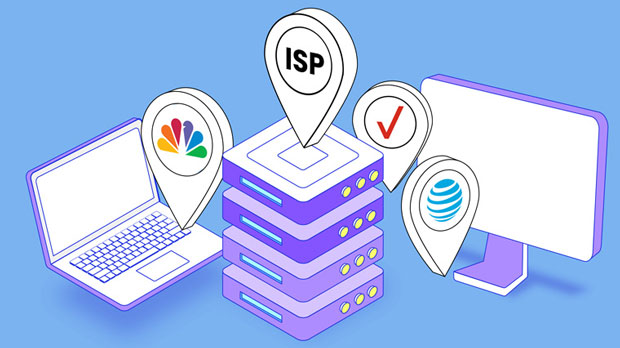When it comes to online privacy and security, proxies play a critical role in ensuring anonymity while browsing. SOCKS5 and HTTPS proxies are among the most commonly used tools for masking users' IP addresses, but they differ in the level of anonymity and security they provide. This article aims to compare SOCKS5 and HTTPS proxies in terms of their effectiveness in preserving anonymity, helping users make an informed decision based on their needs. Introduction to SOCKS5 and HTTPS ProxiesSOCKS5 and HTTPS proxies are both types of internet proxies used to route traffic through an intermediary server, effectively masking the user's real IP address. However, they operate differently and offer varying levels of anonymity and security. sock s5 proxies are often favored for their flexibility, as they support a wide range of traffic types, including peer-to-peer connections and streaming. HTTPS proxies, on the other hand, focus more on secure web browsing by encrypting the traffic between the user and the server. The question arises: which one provides stronger anonymity? socks5 proxy: How It WorksA SOCKS5 proxy operates by forwarding traffic through a server that acts as an intermediary between the user's device and the target website. The key advantage of SOCKS5 over other types of proxies is its support for multiple protocols, including HTTP, FTP, and even peer-to-peer traffic. This flexibility makes SOCKS5 a popular choice for applications such as torrents and gaming.The SOCKS5 proxy does not alter the traffic itself, meaning that it does not inspect the data passing through it. This makes it less likely to introduce latency and ensures that the user's online activities remain as private as possible. It is also capable of handling any type of traffic, whether encrypted or not, without modifying the content.HTTPS Proxy: How It WorksHTTPS proxies, also known as SSL proxies, function primarily by encrypting web traffic using SSL/TLS protocols, ensuring that data transmitted between the user and the website remains private. They are designed specifically for secure browsing and typically handle HTTP traffic. By encrypting the traffic, HTTPS proxies prevent third parties from intercepting and reading the data during transit, providing a layer of security that SOCKS5 does not inherently offer.However, HTTPS proxies are often limited in terms of the traffic they can handle. They only work with HTTP or HTTPS protocols, meaning that they cannot handle other types of traffic like FTP, P2P, or gaming.Comparing Anonymity: SOCKS5 vs. HTTPS ProxyWhen it comes to anonymity, both SOCKS5 and HTTPS proxies have their strengths and weaknesses. The following points provide a detailed comparison of the two in terms of how they handle anonymity:1. Level of EncryptionWhile both SOCKS5 and HTTPS proxies hide the user's IP address, they differ in how they handle encryption. HTTPS proxies offer robust encryption using SSL/TLS protocols, making them excellent for ensuring that data cannot be intercepted or read by malicious third parties. This encryption ensures that the user's online activities are hidden from both the website being visited and any other external parties who might attempt to monitor the user's internet connection.In contrast, SOCKS5 proxies do not provide encryption on their own. While they offer anonymity by masking the user's IP address, the traffic passing through a SOCKS5 proxy is not encrypted unless additional encryption protocols (such as HTTPS or VPN) are used. As a result, although SOCKS5 proxies can keep the user's IP address private, they do not provide the same level of data protection as HTTPS proxies.2. Privacy and SecurityIn terms of security, HTTPS proxies offer better protection due to their encryption capabilities. They prevent eavesdropping on the user's data during transit, making it much harder for third parties to access sensitive information such as login credentials or browsing history. This makes HTTPS proxies particularly suitable for users who prioritize privacy when accessing websites that require sensitive data input, such as online banking.On the other hand, SOCKS5 proxies are often used for anonymity in less sensitive browsing, such as streaming or torrenting. While they mask the user's IP address and provide some degree of privacy, the lack of encryption means that the data can potentially be intercepted by hackers or malicious entities. However, for users who need anonymity for general web browsing without sensitive data being transmitted, SOCKS5 proxies can still offer a reasonable level of privacy.3. Speed and LatencySOCKS5 proxies are generally faster than HTTPS proxies because they do not involve the overhead of encryption. The lack of encryption means that SOCKS5 proxies have lower latency and faster data transfer speeds, making them a preferred option for activities like gaming, streaming, and torrenting.HTTPS proxies, on the other hand, introduce some latency due to the encryption and decryption process. While the added security is valuable, it can cause slower connection speeds, especially when accessing websites that require extensive data processing. For users who require both security and speed, this trade-off is a significant consideration.4. Flexibility and CompatibilitySOCKS5 proxies are more flexible in terms of compatibility. They can handle a wide range of protocols beyond just HTTP/HTTPS, including FTP, P2P, and even VoIP. This makes SOCKS5 proxies ideal for users who need anonymity across various applications and not just web browsing.HTTPS proxies, while effective for secure browsing, are limited to handling only HTTP or HTTPS traffic. They are not suitable for applications that require other types of traffic, such as peer-to-peer file sharing or online gaming.Which Proxy Is Better for Anonymity?When it comes to pure anonymity, SOCKS5 proxies provide a higher level of flexibility, as they can mask the user's IP address across different types of internet traffic. However, for users who prioritize both privacy and security, HTTPS proxies are a better choice. The encryption provided by HTTPS proxies ensures that not only the user's IP address but also the data being transmitted remains private and secure. For those looking for high levels of anonymity without sensitive data exchange, SOCKS5 is a solid choice. But if security, particularly data encryption, is of utmost importance, an HTTPS proxy is the better option, despite its limited scope in handling different types of traffic.ConclusionBoth SOCKS5 and HTTPS proxies offer valuable anonymity features, but they cater to different needs. SOCKS5 is more suitable for users who need flexible and fast internet connections without extensive encryption, while HTTPS proxies provide stronger security and are ideal for secure web browsing. The best choice between these two depends on the user's primary concerns: whether they prioritize speed and flexibility or require robust encryption and security for sensitive data.
Jul 15, 2025



































































